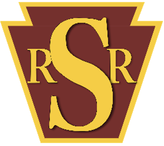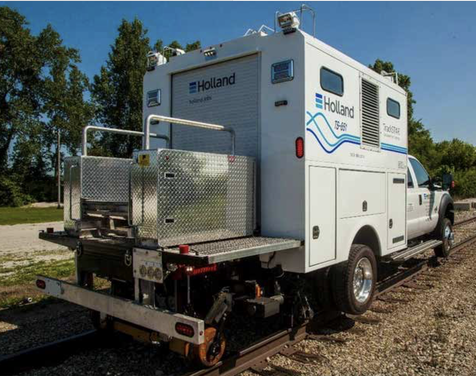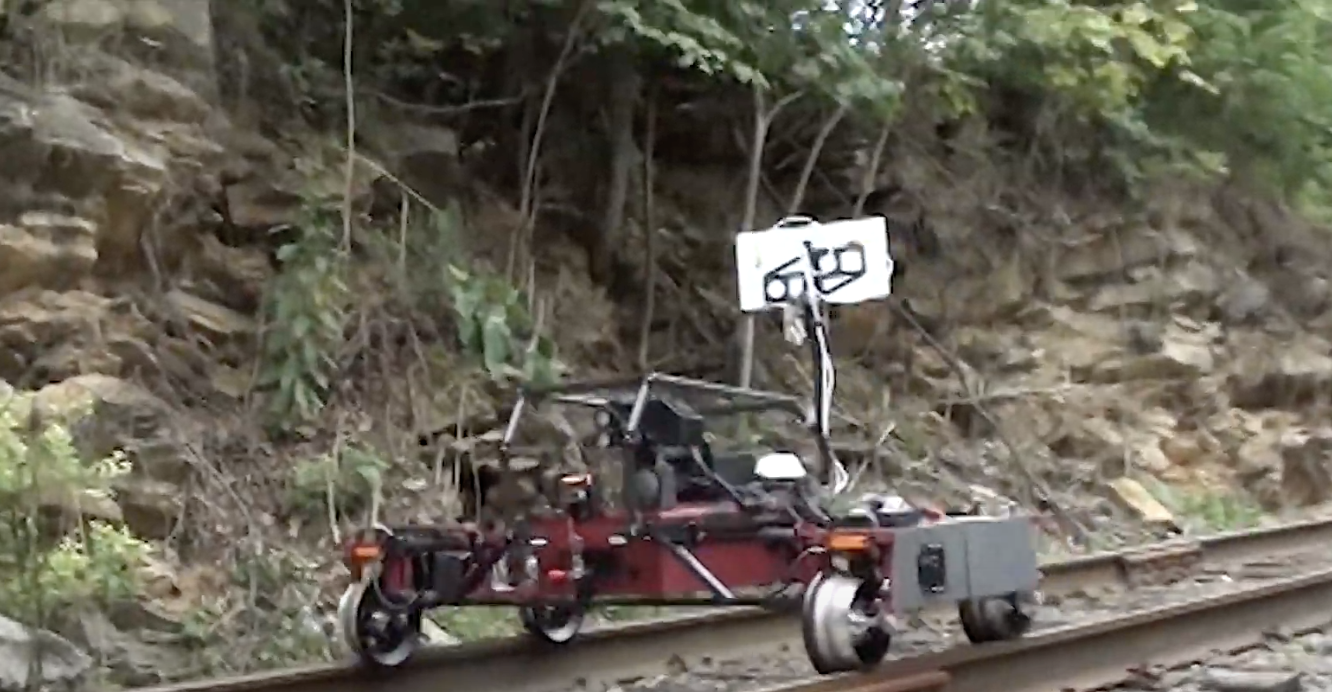Education - Part 5C4
Maintenance of Way - Ties & Rails
Tie (Sleeper) Maintenance
Once the track bed and rail geometry has been dealt with, ties (crossties, sleepers) must be addressed. This will be necessary, whether ties are wood, concrete or steel. The first step is to identify problems with ties. The first time possible for tie inspection is during manufacture. For wood ties, The Railway Tie Association publishes Specifications for Timber Crossties and Switch Ties which provides the basis for wood tie inspection during and just after manufacture. A report from the University of Kentucky College of Agriculture titled Producing and Inspecting Railroad Crossties presents excellent information on the many flaws that can be found during the wood tie manufacturing process.
Similar standards and procedures exist for concrete and steel ties. For example, Holland Co. offers a hi-rail vehicle (see illustration below) that identifies defects or potential defects in
concrete and other kinds of ties. Any defective ties can be flagged for necessary maintenance. The Federal Railroad Administration (FRA) maintains standards for concrete tie manufacture and maintenance published as Track Safety Standards; Concrete Crossties, Federal Register / Vol. 76, No. 175 / Friday, September 9, 2011 / Rules and Regulations 55819-55825.
Several sorts of machinery have been developed to traverse the rails and identify things such as broken ties, loose or missing fasteners (spikes, springs, etc.), misaligned or incorrectly-spaced ties and other problems. Another example of a device for identifying problems with ties is shown in the following figure.
Wood ties require the most maintenance. In any case, special machines are available to pull the spikes, remove the tie plates and old ties and retrieve the spikes and tie plates using magnets (see, for example this video - ~22 minutes). The machines can then slide in the new tie(s), replace the tie plates and drive new spikes or use more modern fasteners to hold the rails in place. Ballast is also adjusted as needed to insure a firm foundation and to reduce lateral movement.
Similar procedures are available for concrete or steel ties (sleepers) although such maintenance is usually needed less frequently.
Rail Maintenance
Rails require maintenance just as do all the other components of a railroad network. Such work begins with inspection and identification of problems. We have already discussed wear. One of the more difficult problems to identify is internal defects in the steel that can lead to breakdown of a rail and lead to derailment or worse. Such defects may not become detectable until a rail has been in use for some time.
Today, a variety of techniques is used to detect flaws in the steel of the rail. X-ray, ultrasound, eddy current and electromagnetic acoustic transducer technologies are used to detect rail defects that would be invisible otherwise. See, for example, Rail Inspection, Sperry and ENSCO.
Rails require maintenance just as do all the other components of a railroad network. Such work begins with inspection and identification of problems. We have already discussed wear. One of the more difficult problems to identify is internal defects in the steel that can lead to breakdown of a rail and lead to derailment or worse. Such defects may not become detectable until a rail has been in use for some time.
Today, a variety of techniques is used to detect flaws in the steel of the rail. X-ray, ultrasound, eddy current and electromagnetic acoustic transducer technologies are used to detect rail defects that would be invisible otherwise. See, for example, Rail Inspection, Sperry and ENSCO.



